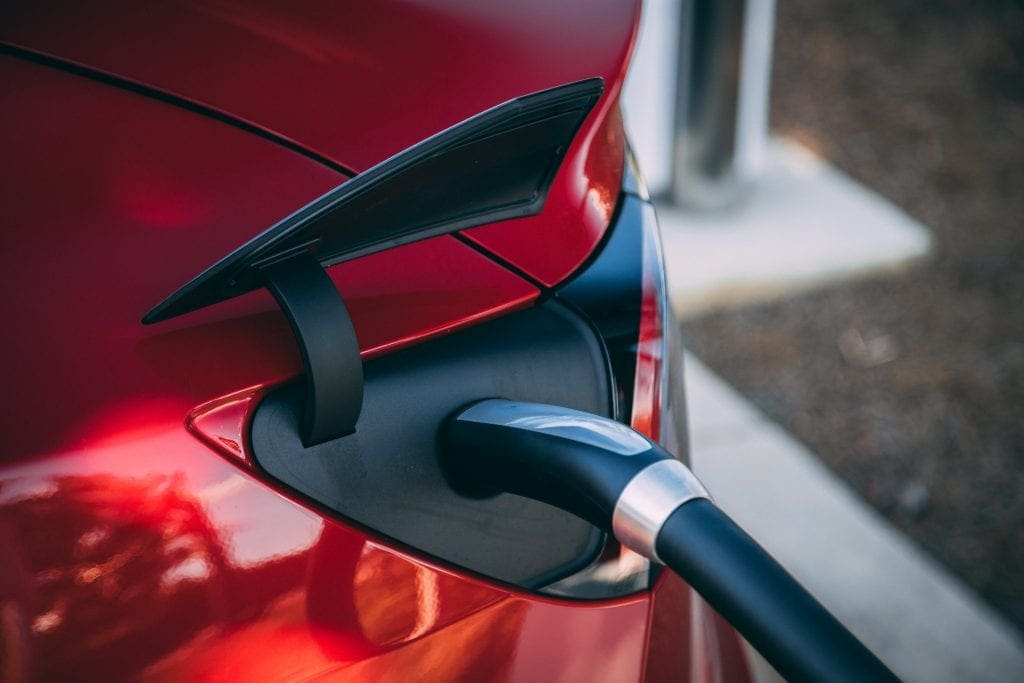Remember hows gasmobiles were a luxury item until the Ford Model T came along? No? Well anyways, electric vehicles are closing in on a similar tipping point. The sticking point is the cost of an EV battery, which remains stubbornly high compared to, say, the cost of a gas tank. That’s about to change, and the US Energy Department has the lowdown on new energy storage technology that will help vault EVs into the affordable mainstream.
Energy Storage & Electric Vehicles
To be clear, comparing the cost of energy storage technology with the cost of an empty gas tank does not provide a full picture of the true cost of owning an electric vehicle.
Back in 2013, Edmunds took a look at the Chevy Volt and found that the true cost of ownership over five years — including fuel and maintenance as well as the price of the vehicle — shaved thousands off the retail price compared to a gasmobile.
That’s partly because EV fuel is less expensive, especially if you play your EV charging card right.
The other part of the cost-cutting equation is maintenance and repair, because electric drive requires less of that compared to gasmobiles (the Volt has a gas tank but runs on electric drive).
Depending on the manufacturer, adding resale value to the equation can also bring the five-year cost of EV ownership down to parity — or better — with a gasmobile. One recent study compared a Tesla model 3 to a Toyota Camry and guess who came out on top?
Three EV Energy Storage Technologies To Watch…
With the true cost of ownership in mind, let’s take a look at the four emerging battery technologies that the Energy Department is eyeballing.
Gerbrand Ceder, a battery researcher at Lawrence Berkeley National Laboratory, provided a rundown on them last week.
For starters, he favors replacing the cobalt and nickel currently used in lithium-ion batteries with iron or manganese.
Aside from the potential for reducing costs, eliminating cobalt would free the EV supply chain from human rights issues associated with cobalt mining in some parts of the world.
Ceder foresees that technology hitting the shelves in about five or six years.
Solid-state is another type of technology that could launch into the market in about five years. Rather than using a flammable liquid electrolyte, these batteries are based on a solid, inflammable material.
That safety advantage would help lower costs, by eliminating the need to engineer extra systems into the battery. Cutting out the extra systems will also help improve battery range, by reducing weight and leaving more space for the energy storage components (to be clear, modern lithium-ion batteries have proven to be safe when properly engineered).
An even more promising energy storage technology on the farther horizon is the multi-valent battery. Here’s the explainer from Berkeley Lab:
“Instead of using lithium ions, which are “single valent,” this technology would use materials with ions that carry more charge, like magnesium, calcium, or possibly aluminum. These so-called “multi-valent batteries” could therefore be much smaller and more powerful than lithium-ion batteries.”
Unfortunately, according to Ceder multi-valent batteries are about 10 years away from your friendly neighborhood EV dealer.
If you need a new car right now, here’s the best bet: don’t get a gasmobile. Take a look at the true cost of ownership and get yourself an EV equipped with today’s energy storage technology. By the time you’re ready for another new EV, there will be plenty more to choose from.
…And One For Utility Scale Energy Storage
Sodium-ion is the fourth type of energy storage Ceder discussed. Though perhaps not applicable directly to EVs, it could have a significant impact on EV drivers who want more renewable energy for charging their EVs.
Lithium-ion batteries are currently the format of choice for battery-style energy storage at wind and solar farms. According to Ceder, sodium-ion batteries could come in at about half the cost.
Here’s the rundown from Berkeley Lab:
“…A sodium-ion battery would operate exactly the same as a lithium one, except instead of moving lithium ions, it would move sodium ions. Sodium is much cheaper than lithium, and the materials that would be used to store sodium could also be cheaper than those to store lithium, which are primarily cobalt and nickel-based oxides.”
Ceder figures sodium-ion technology for utility scale storage is only about three or four years away. When that happens, more EV drivers will be able to plug into more renewable energy instead of a grid mix sourced from coal or, for that matter, natural gas.
And What About Natural Gas?
Yes, what about natural gas? The potential for halving the cost of battery energy storage for wind and solar farms means two things for the EV market — and for natural gas stakeholders.
First, it means that the prospects for natural gas to maintain its current status as the #1 electricity generating source in the US are becoming slimmer.
Combined with the falling cost of wind and solar, and the advent of wind-solar hybrids, the low cost energy storage is already beginning to nudge natural gas out of the power generation market.
The movement away from natural gas is just barely registering on the utility scale power generation market now, but a steep drop in the cost of energy storage could help accelerate that trend.
That would probably disappoint gas stakeholders, who have been anticipating that the EV revolution will help keep gas power plants in demand.
The other impact will be on the compressed natural gas side.
CNG vehicles were once all the rage for reducing tailpipe pollution from municipal buses and other fleet vehicles. Now fleet managers are now looking at a perfect storm of falling costs for EV batteries, renewable energy, and utility scale energy storage. CNG is well, falling by the wayside.
In a harbinger of things to come, the US Army (think: massive fleet of vehicles) appears to be leaning in the EV direction at the expense of CNG and other alternatives.
Source: CleanTechnica









